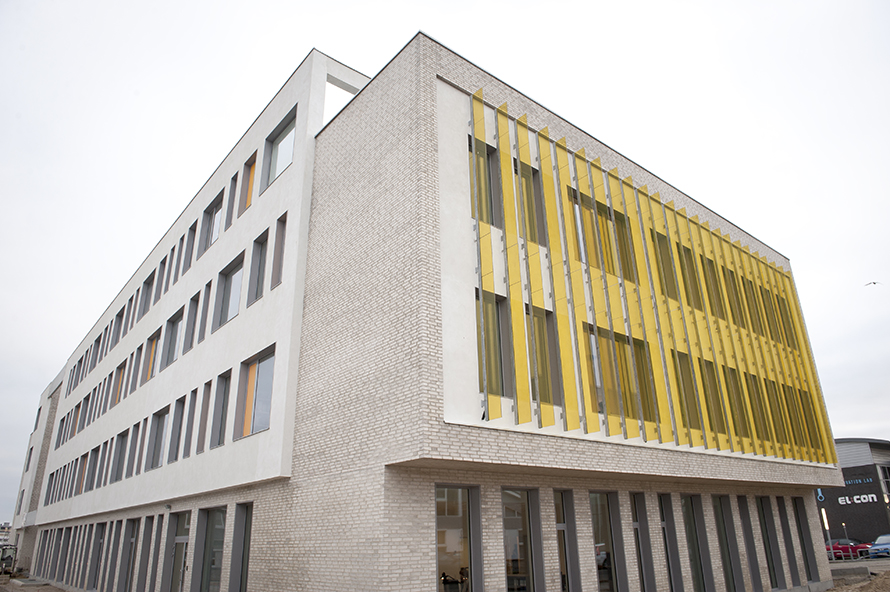The Department of Engineering of Aarhus University, Denmark wants to revolutionize plastic usage in 3D printing. The aim is to recycle plastic waste into a standardized filament product since the industry lacks the standards of print-quality filament – states professor and plastics expert Mogens Hinge. The university is cooperating with Aage Vestergaard Larsen A/S plastic recycling company, and the project has already received EUR 84,000 funding.
3D Printing Industry asked Professor Hinge for more details.
“The industry is a Wild West for the users”
According to the professor, the necessity of the reform is due to the increasing need for 3D printing-filament, since the industry is rapidly growing and the practice of plastic usage is often ad-hoc and lacking in standards. This makes the industry like the “Wild West” for users, says Hinge.
“The problem arises from carelessly using plastic for 3D printer filament, and not dimensioning the components in relation to the material, as is otherwise practice in the plastics industry.”
The quality of the filament is unpredictable?
According to Hinge, 3D printing filament can vary in quality, even if the product is made of the same type of plastic and comes from the same supplier. He explains his concerns via the analogy of lumber production. As the strength and density can differ in case of wood planks, made by the same process and from the very same type of tree, so there can be batch to batch variations during plastic production.
Hinge says, “even if you buy a reputable-brand filament, there are still problems because there are no standards for what you put into the machine that makes the filament. This is annoying for the individual consumer, but can be disastrous for the industry, which, to a large extent demands documentation for the product.” Hinge told 3D Printing Industry that in his experience the same brand and type of filament does not print consistently and the temperature, speed and feeding rate must be adjusted for the desired printing quality, which he finds challenging and also time-consuming.
In many cases nor the polymer type, nor the printing temperature is properly provided on the filament spools, says the Danish professor. According to him, the relevant information for the users, which should be given by the producers include the filament glass transition temperature (Tg), melting temperature (Tm), rheological properties (at least a melt flow index) and surface/wetting properties (e.g. critical surface tension).
Cooperation with a plastic recycling company
The research will develop a standardized, documentable 3D printing filament of high and stable quality from recycled plastics with the support of Aage Vestergaard Larsen A/S, Danish plastic recycling company. “Aage Vestergard Larsen is a company that have recycled plastic since the 70’s. They have a vast knowhow, factory and facilities in plastic recycling and processing. We at Uni have insight in 3D printing, plastic and polymers,” Hinge told us.

Gitte Buk Larsen, business developer, and marketing manager at the recycling-giant Aage Vestergaard Larsen A/S says, “If the project is successful, it’ll revolutionize the material consumption of 3D printers. We’re talking about being able to use plastic waste to create new, high-quality filament. It’ll have a significant impact for the environment and the climate in the long term”.
Positive impact on the environment?
Today, the industry is mostly made up of new, or virgin, plastics, explains Mogens Hinge. Recycling plastics has lower CO2 emissions. Addressing plastic waste from 3D printing is underway at several enterprises. Nefilatek launched a Kickstarter for their 100% recycled plastic filaments last year. Also UK-based 3D printing service bureau, Lancashire3D also set the goal of reducing environmental footprint and being more eco-responsible by ensuring that 95 percent of its waste production plastic is reclaimed and recycled into sustainable 3D printing material. 2020 is set to be a year of renewed focus and commitment to sustainability according to many 3D printing experts we surveyed for our annual leader’s study.
“It is already possible”
Gitte Buk Larsen, marketing manager at Aage Vestergaard Larsen A/S emphasizes, that “no one has cracked the code for producing filament based on a data-sheet in order to ensure uniform quality, and also, currently there are no filament producers in Denmark.”
Professor Hinge believes the 3D printing industry will welcome the approach, “It is already possible, but it is not yet done. I think this is the next necessary step for getting the 3D printing (FDM) technology into production.”
The project is called “Development of filament for 3D printing based on recycled plastics” is headed by Aage Vestergaard Larsen A/S.
If you would like to read more about 3D printing, subscribe to our free 3D Printing Industry Newsletter, like our Facebook page and follow us on Twitter. If you are looking for a position in the industry, or want to hire additive manufacturing experts take a look at our 3D printing jobs site.
Featured image shows Gitte Buk Larsen from Aage Vestergaard Larsen A/S and associate professor Mogens Hinge browsing through plastics. Photo via Aage Vestergaard Larsen A/S.

